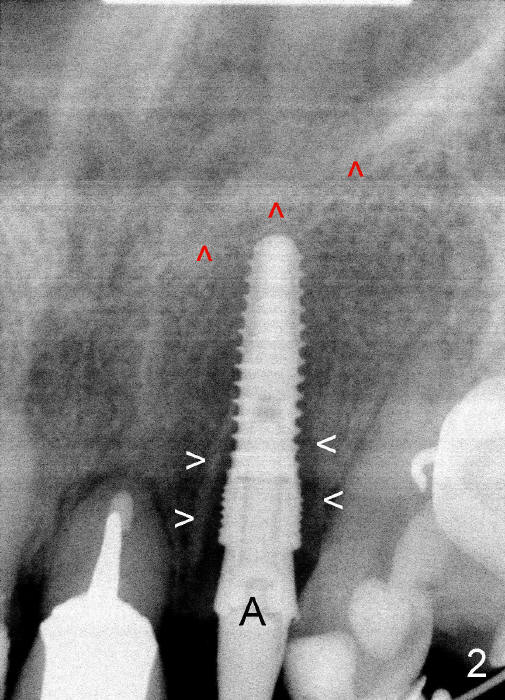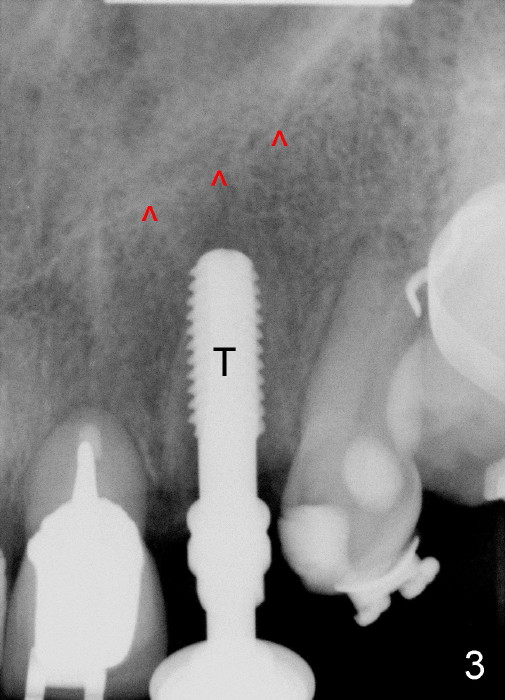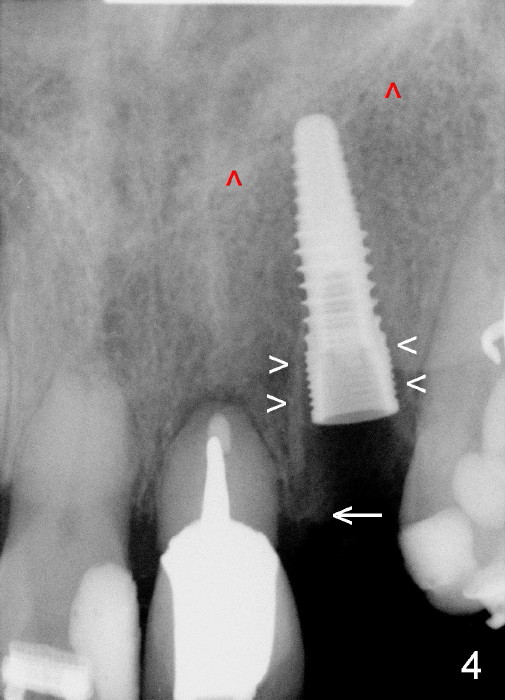


 |
 |
 |
After the 3.8x14 mm implant (Fig.2) is removed, a 4.1 mm tap drill (Fig.3 T) is manually inserted partially (not as deep as the previous implant) to predict whether a 4.1 mm implant can bind to the bone tightly or not. Red ^: the nasal floor.
Fig.4: The 4.1x14 mm implant has to be placed high (subcrestal, <--) in order to get a high insertion torque (<35 Ncm). The gap (<) appears smaller than that in Fig.2. In fact, the tap drill appears to be larger than the corresponding implant, which is wrong.
Return to Why Fails
Xin Wei, DDS, PhD, MS 1st edition 07/20/2013, last revision 01/19/2018